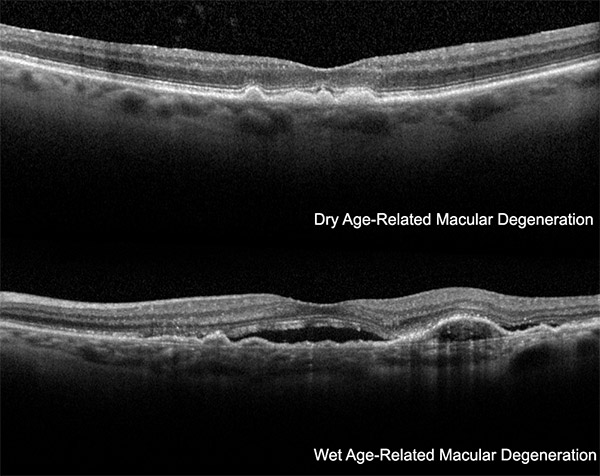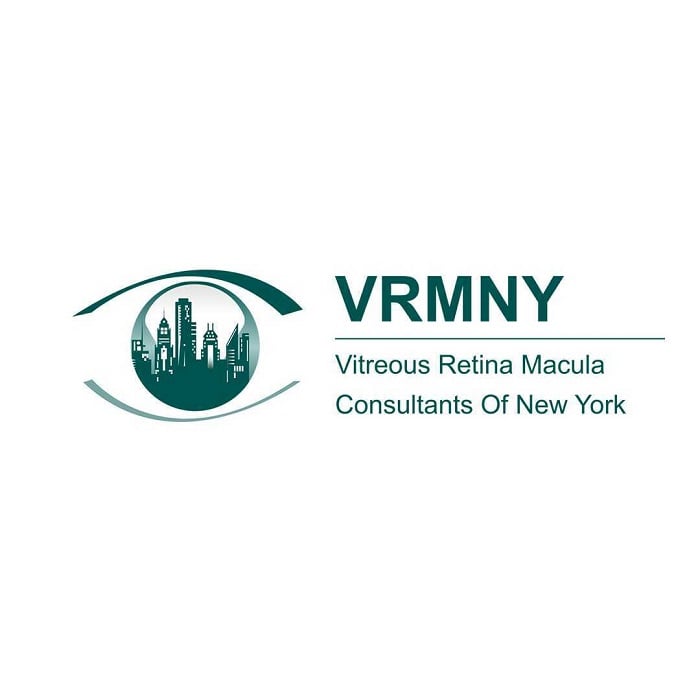
Macular Hole
The macula is the very small area in the back of the retina that is responsible for providing sharpness and clarity in our vision. This detailed vision is necessary for daily tasks such as reading, driving, and watching television. A jelly-like substance called the vitreous fills the central portion of the eye.
It is composed of 99% water, some chemicals to create the gel, and long protein fibers. As we age the vitreous begins to shrink. The jelly starts to break down and the protein fibers start to aggregate. In most people the vitreous eventually separates from the retina in a process called posterior vitreous detachment.
In some people the vitreous may remain adherent to the central portion of the macula and pulling by the vitreous can cause bad things to happen to the macula. Chronic pulling, or traction, on the macula can cause the macula to become distorted or stretched. In some people the force of the traction exceeds the mechanical strength of the macula and a hole can form.
Macular holes are typically very small – smaller in diameter than a pin. However the macula is very important for sharp vision and even a very small hole can cause important visual problems. The vision is generally decreased and distorted.
The curious aspect of macular holes is that they don’t heal themselves. If someone had their ears pierced, but didn’t wear an earring the hole would close. Only the smallest macular holes can close without surgery and even then the chance is low. The retina is really a type of brain tissue, and brain tissue doesn’t heal well. The steps naturally taken by the body to heal a macular hole can make it get larger over time.
Symptoms of Macular Hole
The most common symptoms for a macular hole include:
- Decreased central vision in both near and far reading activities
- Distortion in central vision
- In highly myopic eyes a retinal detachment can form, which can cause a larger area of vision loss
Macular Hole Diagnosis
Doctors at VRM diagnose a macular hole by first looking into the eye. Important characteristics of a macular hole can be determined from measurements made from color photography or by evaluating images obtained by optical coherence tomography.
These evaluations are done in our office using a special computer system that allows the patient to see the images every step of the way. The three most important factors related to macular holes in increasing order of importance are the nature of the traction by the vitreous, the amount of scar tissue around the hole, and the size of the hole.
Continued traction to the hole alters the surgical approach somewhat. In trying to heal the hole, the body appears to make scar tissue that grows out of the retina at the edges of the hole. This scar tissue grows up and onto the retina. Scar tissue eventually shrinks, and this scar tissue enlarges the macular hole.
During the macular hole repair surgery, the scar tissue generally needs to be removed. The most important feature, by far, is the size of the hole. Very small holes may heal without surgical intervention, but over time most will get larger. On the other end of the spectrum large macular holes have a poor chance of closing even with surgery. These holes typically have been present for a long time.
Treatment
Macular holes are repaired by a set of techniques commonly referred to as “vitrectomy”. The goals of this surgery are similar to other types of tissue problems in the body. The jelly like substance is removed from the eye to gain access to the macula.
The structures leading to forces causing the hole to expand are removed, and the tissue is immobilized to help healing. If you break your arm, the doctor would put the bones back into proper position and then immobilize the bones by using a cast. While immobilized the bones heal. If you cut your arm the doctor would sew the skin back to- gether. This puts the skin back into proper position and immobilizes the skin so that it can heal.
The macular is a special tissue that poses difficult surgical challenges. The cells in the macula are very delicate. We can’t sew the macula together, because this would damage the light sensitive cells. Also there is no suture method that is small enough. We can’t use lasers, because lasers burn tissue, which would hurt the light sensitive cells.
Glues have the potential to stimulate scar tissue. So the surgical option we are left with is to remove the tissues and forces causing the hole to remain open and to immobilize the tissue, just as in other places in the body. We can’t use a cast for the retina, so instead we fill the eye with gas. The surface tension of the gas bubble immobilizes the hole.
With the retinal tissue in its proper position and immobilized, we hope the hole will close. The amazing thing is that it often does close. Small holes close a little more than 90% of the time after 1 operation. Once the hole size exceeds 400 microns in diameter – about the equivalent thickness of 4 pieces of paper stacked together – the proportion of successful cases drops off dramatically.
Back in the old days (the 1990s) this involved making relatively large incisions in the eye. The scar tissue and related layers were sometimes removed, sometimes not, and a gas bubble that lasted up to 6 weeks was used. During that time the patient had to keep their face down, top position the gas bubble over the hole.
At Vitreous Retina Macula Consultants of New York, one of our ophthalmologists and retina specialists will meet with you during your consultation to assess your situation. We will explain each treatment option’s pros and cons and suggest which treatment to repair a macular hole is right for you. VRMNY eye surgery center in New York specializes in treating all medical and surgical retinal conditions, emphasizing Vitreomacular Traction and Macular Hole. Request an appointment online or call the internationally-renowned retina specialists and best-rated Macular Hole Doctors at (212) 861-9797 to schedule your private consultation.
Vitreous Retina Macula Consultants of New York
950 3rd Ave 3rd floor,
New York, NY 10022
Tel.: 212-861-9797
Fax.: 212-628-0698
EN URL: https://www.vrmny.com/
ES URL: https://www.vrmny.com/es/
Our location on the map: https://goo.gl/maps/v9rE1BWBd6tsFgPaA
https://plus.codes/87G8Q26J+3R New York
Nearby Locations:
Manhattan, NY
Lenox Hill, Upper East Side, Midtown East, Upper West Side
10021, 10022, 10023
Working Hours:
Monday-Friday: 8am – 5pm
Payment: cash, check, credit cards.
